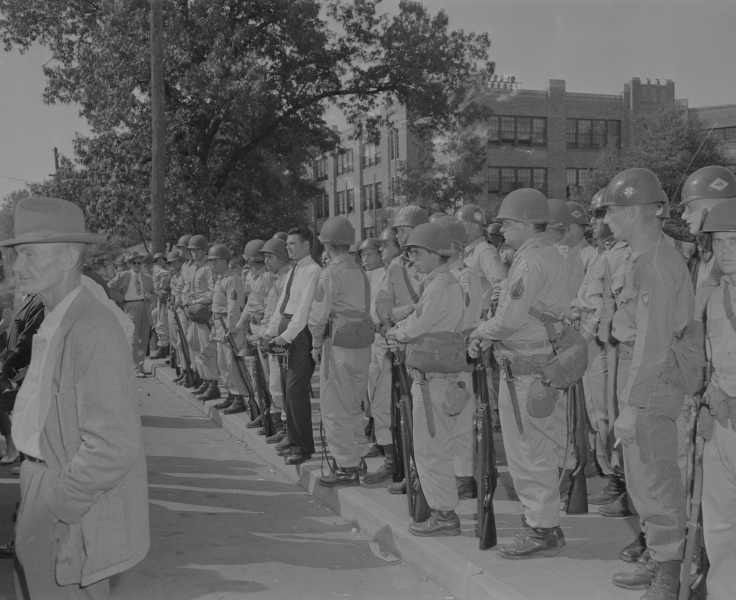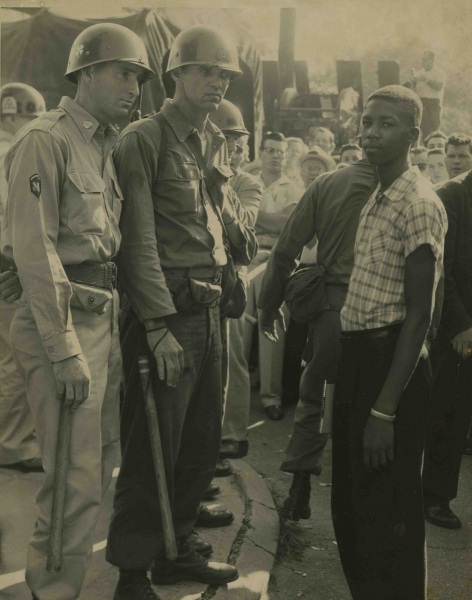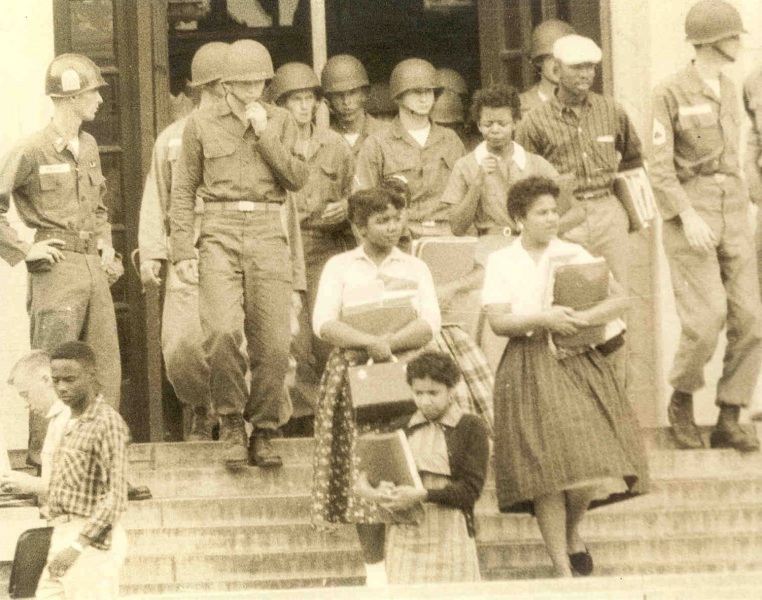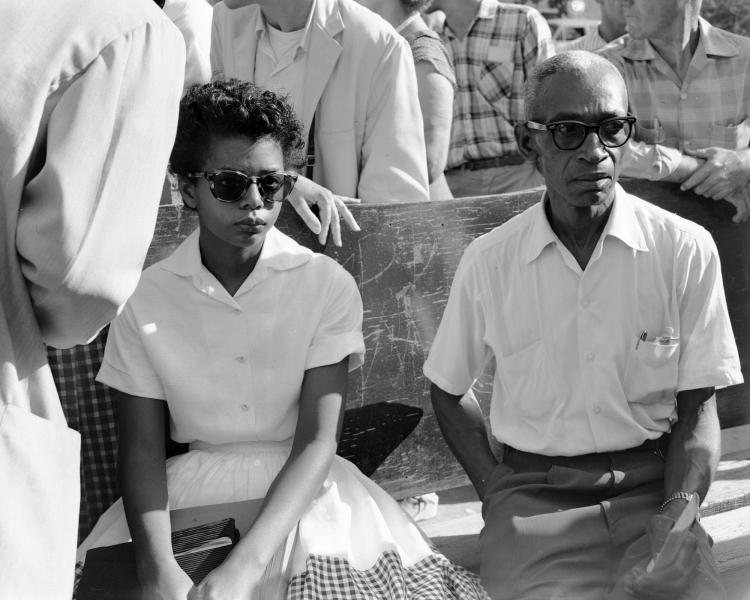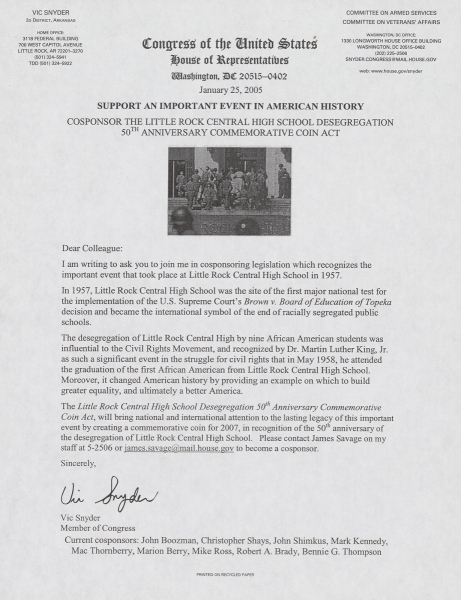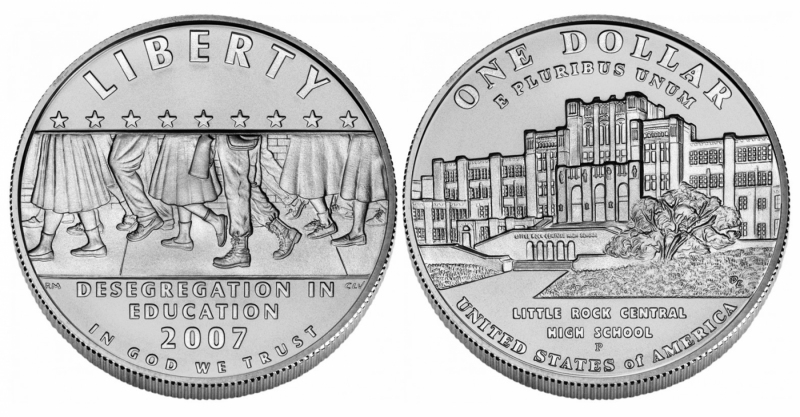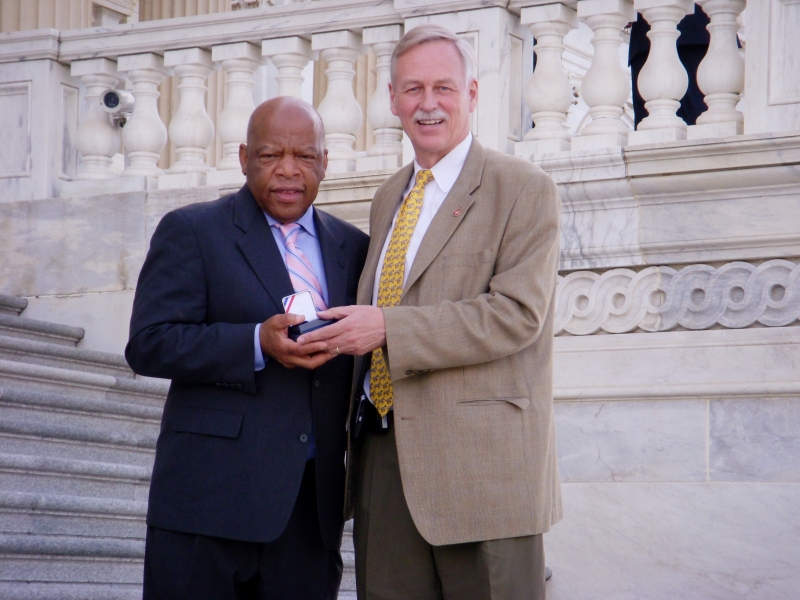Commemorative coins were first produced by the U.S. Mint in 1892. Congress authorizes the U.S. Mint to issue legal tender commemorative coins that tell and celebrate the story of America. Congressman Vic Snyder holds the distinction of sponsoring the law that created the first silver dollar in the history of the U.S. Mint to honor an event from the American civil rights movement: the desegregation of Little Rock Central High School.
CENTRAL HIGH SCHOOL
Desegregation
In 1957, Little Rock Central High School was the first major implementation of the 1954 U.S. Supreme Court ruling in Brown v. Board of Education of Topeka. This landmark decision stated that the doctrine of “separate but equal” had no place in public education. On September 4, 1957, nine African American students, collectively known as the "Little Rock Nine,'' attempted to enter Central High School, but they were turned away by the Arkansas National Guard and an angry mob. To aid in the compliance of federal law, President Dwight D. Eisenhower issued Executive Order 10730, which directed 1,000 troops from the 101st Airborne Division to Little Rock and federalized the Arkansas National Guard. This event became a significant point in the civil rights movement and changed American history by providing an example on which to build greater equality.
CENTRAL HIGH DESEGREGATION 50TH ANNIVERSARY
Commemorative Coin Act
On January 25, 2005, Snyder introduced H.R. 358, the Little Rock Central High School Desegregation 50th Anniversary Commemorative Coin Act. The bill had eighteen bipartisan original cosponsors, including all of the members of the Arkansas Delegation in the U.S. House of Representatives. The supporters included U.S. Representatives Marion Berry, John Boozman, and Mike Ross, as well as Representative Danny Davis (Illinois), a native of Parkdale, Arkansas.
Under congressional rules, legislation to create a commemorative coin cannot move forward in the legislative process unless it garners a two-thirds supermajority of members of Congress to cosponsor the legislation in both chambers of Congress, 290 supporters in the U.S. House of Representatives and 67 supporters in the U.S. Senate. Snyder and his congressional staff worked tirelessly to gain a total of 321 cosponsors of this legislation in the U.S. House of Representatives. Snyder also diligently worked with Arkansas’s U.S. Senator Mark Pryor to introduce a mirror version of his legislation in the U.S. Senate that garnered 69 bipartisan Senate cosponsors, including Arkansas’s other senator, Blanche Lincoln.
After passage by both the U.S. House of Representatives and the U.S. Senate, H.R. 358, the Little Rock Central High School Desegregation 50th Anniversary Commemorative Coin Act, was signed into law by President George W. Bush on December 22, 2005.
The Little Rock Central High School Desegregation 50th Anniversary Silver Dollar was available for a limited time in 2007. A $10 surcharge per coin was dedicated to the preservation and protection of the legacy associated with the Little Rock Central High School National Historic Site. This resulted in approximately $1.9 million in total proceeds to help ensure that this notable American story continues to be told to future generations.
CIVIL RIGHTS ACT OF 1964
Commemorative Coin Act
Snyder was also instrumental in the passage of the legislation that created the second commemorative coin to highlight an event of the American civil rights movement: H.R. 2040, the Civil Rights Act of 1964 Commemorative Coin Act, sponsored by civil rights icon Congressman John Lewis. In Congressman Lewis’s own words on the House floor during debate of that legislation, “We would not be standing here today with this bill being considered on the floor, with 313 cosponsors, without the help of my good friend and colleague, Representative Vic Snyder. Representative Snyder was a champion of this bill. I appreciate his support of this bill and the ideas behind it.”1
For More Information:
- Statement of Representative John Lewis, 154 Cong. Rec. H1853, 2008.
Civil Rights Act of 1964 Commemorative Coin Act, Pub. L. No: 110-451, 122 Stat. 5024. 2008. https://www.congress.gov/110/plaws/publ451/PLAW-110publ451.pdf.
Little Rock Central High School Desegregation 50th Anniversary Commemorative Coin Act. Pub. L. No: 109-146, 119 Stat. 2678. 2005. https://www.congress.gov/109/plaws/publ146/PLAW-109publ146.pdf.
U.S. Congress. House. Little Rock Central High School Desegregation 50th Anniversary Commemorative Coin Act. HR 358. 109th Cong. 2005. https://www.congress.gov/bill/109th-congress/house-bill/358/summary/00?r=442.
United States, Supreme Court. Brown v. Board of Education. United States Reports, vol. 347, 17 May 1954, pp. 483-97. Library of Congress. https://tile.loc.gov/storage-services/service/ll/usrep/usrep347/usrep347483/usrep347483.pdf.
About the Author:
James Savage is a government relations professional in Washington, D.C. A native Arkansan from College Station and Little Rock, he previously served on Congressman Vic Snyder's congressional staff as Legislative Director and as Chief of Staff.

